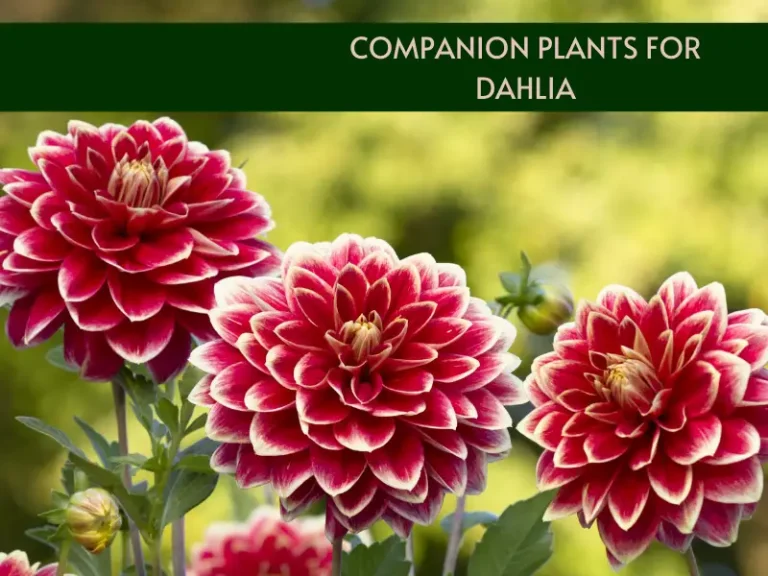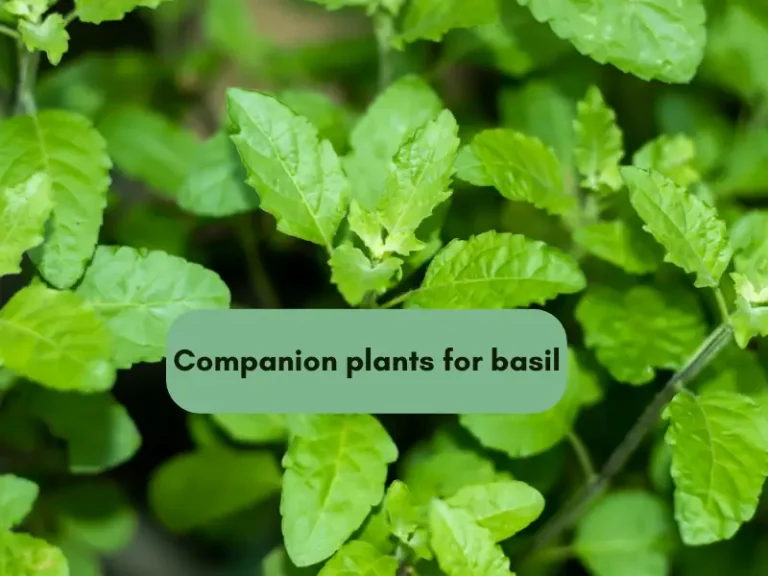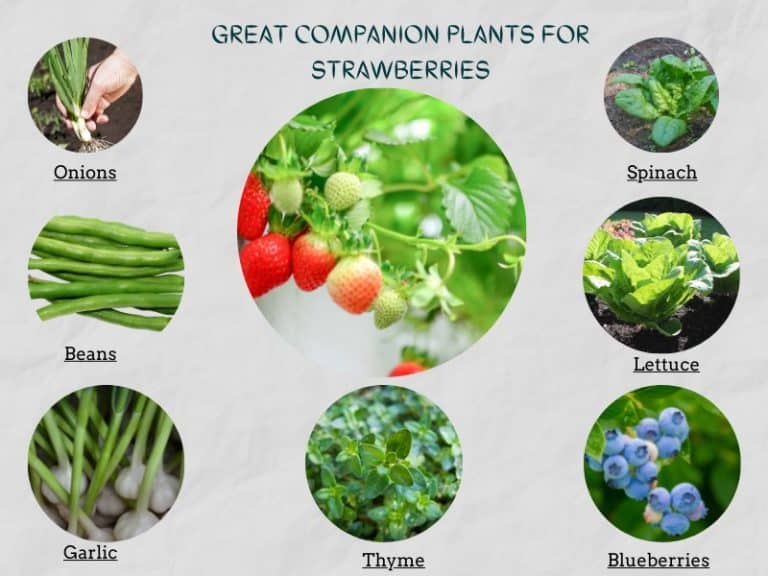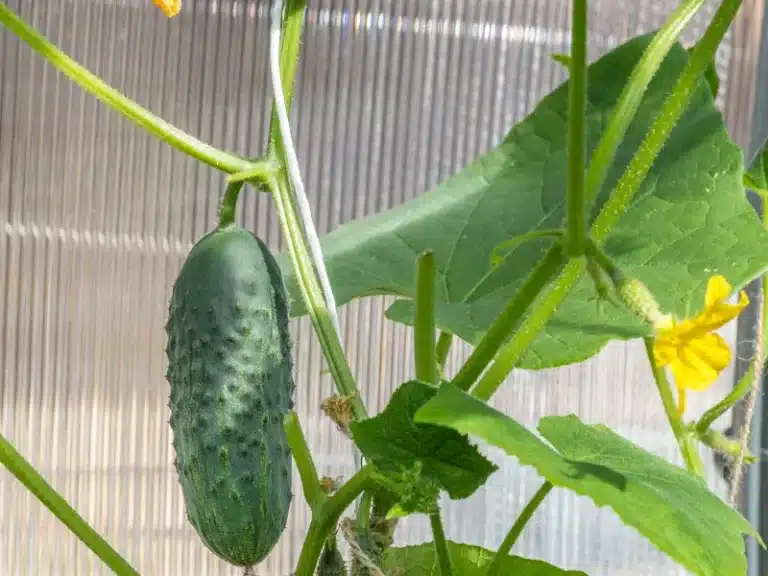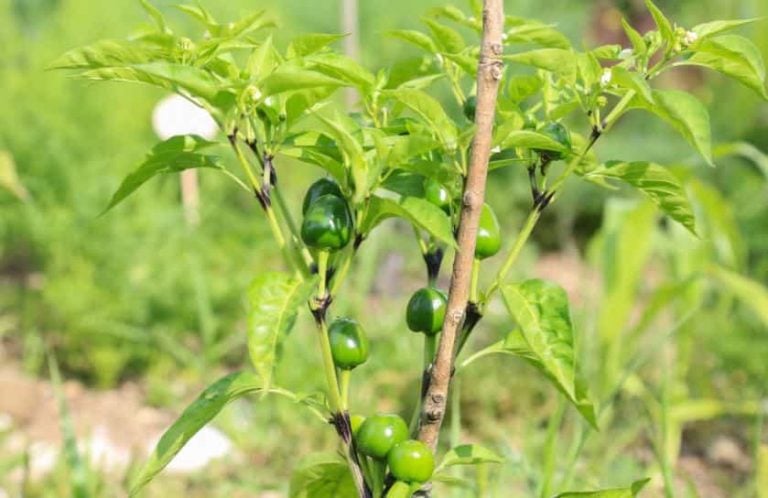Top 8 Sage Companion Plants and Pairs to Avoid
Sage (Salvia officinalis) is a great mint herb that we love using as a spice to add flavor to different types of foods and beverages. We grow plenty of sage, but to add spice to the garden itself, I prefer pairing it with other garden plants.
I’m a certified master gardener, and in this article, I’ll recommend the best plants to pair with save for a more productive garden.
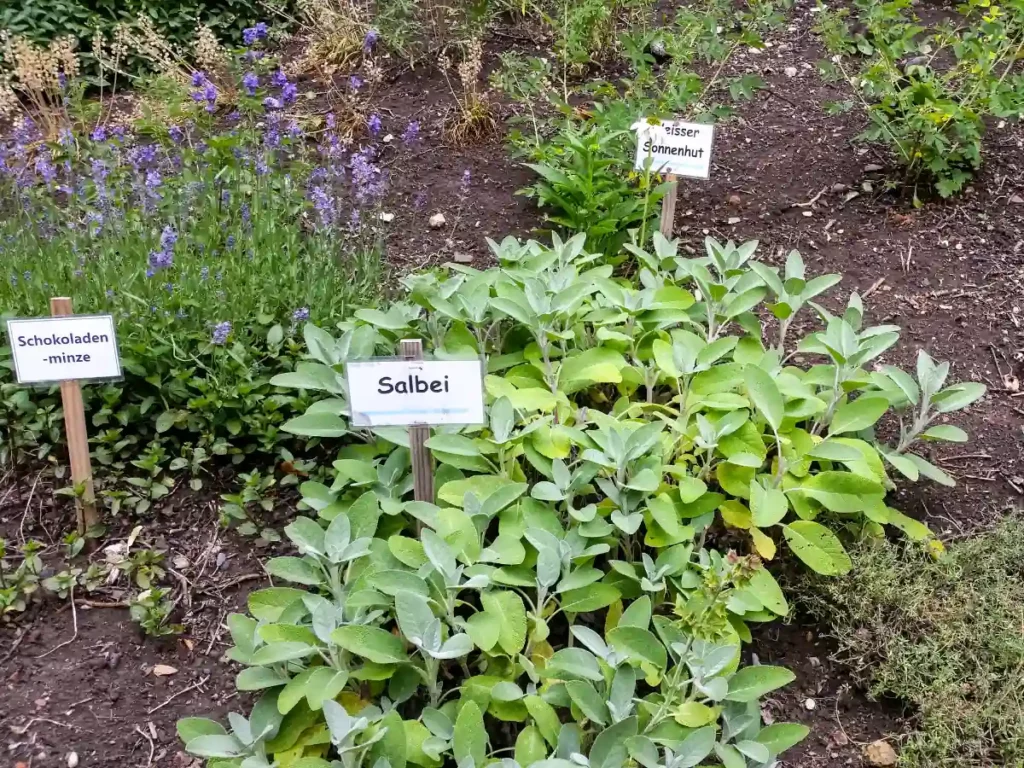
But first, benefits include better use of limited garden space, repulsion of common garden pests, and improved soil nutrient levels.
Plants to Pair with Sage
Plant pairs that have pest repulsion properties or some other benefit, including attracting pollinators. In fact, sage itself attracts pollinators to the garden, so it is quite a useful herb if you want bees and other pollinizer insects to visit your garden.
Here are plants you can plant next to sage:
Thyme
If you have sandy garden soil, you can pair sage with thyme. Both have decent drought hardiness and will thrive next to each other in such fast-draining soil.

Thyme and sage are perennial plants that will return yearly, with both also reseeding themselves.
If you, therefore, want a long-lasting garden that you won’t have to replant every year, the combination of sage and thyme is a good option.
Additionally, since you don’t have to till the soil to replant every season, you’ll be avoiding the potential problems that arise from disturbing the root base of sage while tilling.
Gardener’s note: Creeping thyme is an excellent ground cover crop; it grows fast and spreads laterally to prevent soil erosion. Remember that erosion can cause poor water retention through increased evaporation in bare soil. Creeping thyme as groundcover helps to retain water for longer, thus preventing sage from suffering drought stress.
Carrots
We use the aromatic qualities of sage to mask the scent of carrots to pests like carrot flies. In this case, sage is a great protective barrier and pest repellent for the carrots.
Also, other carrot pests, though unable to be repelled by the smell of sage, may not be able to detect the smell of the carrots due to the overpowering scent of sage.
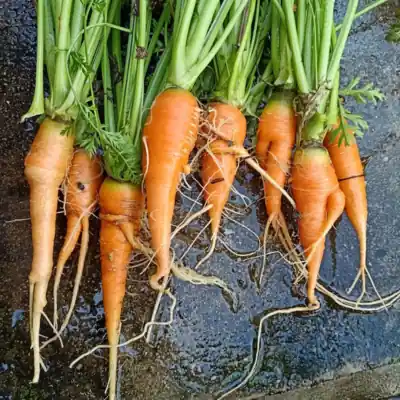
While not proven, some gardeners actually believe that planting sage in close proximity to carrots enhances the flavor of carrots. I don’t have any experience with the taste benefits myself, but it’s certainly an added perk that some gardeners enjoy.
Conversely, carrots return the favor by improving soil drainage, especially in loamy soil. The giant carrot plant taproot breaks down heavy soil as it grows downwards, allowing for better drainage, a requirement for sage to thrive.
Additionally, carrots are root crops; thus, there’s minimal competition for space when inter-planted with sage. This is especially useful if you have limited space in your garden.
Pro tip: When pairing sage with taproot plants such as carrots, I recommend planting sage at the borders to prevent disturbing their roots while harvesting/uprooting mature carrots.
Strawberries
Sage has attractive blooms with hollow corollas that come in flashy colors like red, pink, and purple.

These flowers attract beneficial insects like butterflies and bees that facilitate pollination. Strawberry plants that are pollinated by honey bees produce the highest fruit yields.
According to BeeAware, an Australian government-funded agency that provides trusted information on honeybee biosecurity and pollination, “Strawberries benefit from insect pollination.”
Statistics by the agency report that in a study, “Cages without honey bees only produced 55 per cent fruit set compared with 65.5 per cent in cages with honey bees.” This reiterates the importance of companion planting plants like strawberries with sage to attract pollinators for a better yield.
Strawberries are also prone to slug infestations. The slugs feed on ripe strawberry fruits, leaving behind holes that make the fruits undesirable to potential buyers and consumers. One way to keep the slugs away is by pairing them with sage.
See more companion plants for strawberries here.
Brassicas
Brassicas include plants such as kale, cauliflower, cabbage, broccoli, and Brussels sprouts. This family of vegetables is vulnerable to pests such as cabbage moths, black flea beetles, aphids, snails, slugs, and caterpillars.
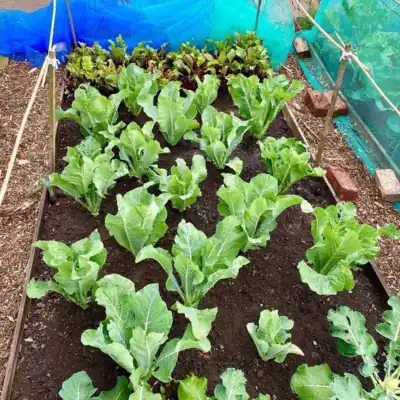
One natural yet effective way we use to keep these pests off the leaves of brassicas is by inter-planting with sage. The strong scent of sage repels these pests.
Additionally, the showy flowers of sage plants attract beneficial insects like hoverflies, parasitic wasps, ladybugs, and praying mantises that prey on common garden pests.
Examples of brassica pests you can effectively control by introducing predatory insects (via companion planting with sage) include aphids, cabbage worms, and cabbage loopers.
Rosemary
One of the reasons why we like a polyculture system is the distinctive fragrance you get from mixing the different types of plants.
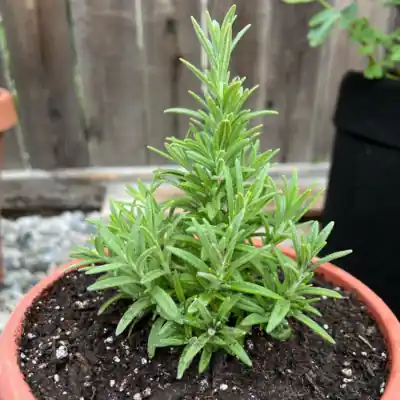
Pairing sage with rosemary results in a uniquely fragrant garden due to the combination of the aromatic rosemary smell and mint-like sage smell. This is a therapeutic garden for me.
Pairing sage with rosemary also has ornamental value, as they both bloom in the summer. The blue rosemary flowers and purple-blue sage flowers blend well and are a sight to behold.
The pairing of sage and rosemary is a rare option for those who prefer an all-herb garden, as sage is a herb that mainly pairs well with vegetables, but not herbs. Its ability to grow well next to rosemary is a rare exception.
Pole beans
Pole beans, as well as other types of leguminous plants, pair well with sage due to their nitrogen-fixing capabilities.
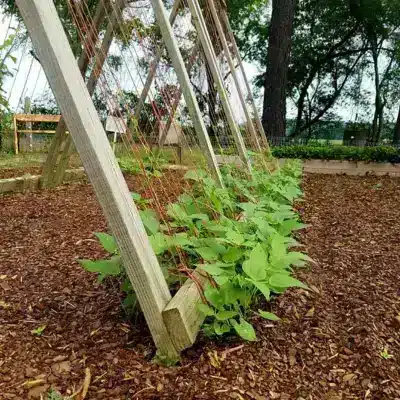
The sage plants benefit from the increased soil nutrients that the pole beans fix into the soil, resulting in higher yields and improved taste and flavor of the sage.
Beware, though, that interplanting sage with pole beans can hamper the growth of the pole beans. I recommend planting the sages at the garden’s border while keeping them at least a couple of meters away from the pole beans.
Nasturtium
Sage is vulnerable to white flies and aphids. You can keep this pesky pest off your sages by pairing them with nasturtium as a trap crop. The aphids and whiteflies will prefer to invade the nasturtium instead of sage.
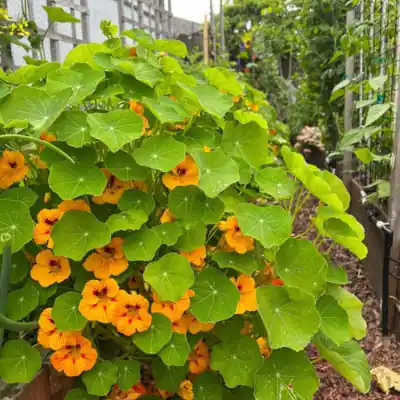
This plant pair also helps improve your home garden’s aesthetics. Nasturtium has yellow-bright red flowers that create the perfect contrast when combined with sage, whose blooms carry shades of purple, pink, and red.
The combination of sage and nasturtium is also great for attracting pollinators to your home garden. Sage’s flowers attract butterflies, while nasturtium has delightful nectar that attracts bumblebees and hummingbirds.
Through pollination, the rest of the plants in your garden can produce better yields and healthier-looking fruits.
Oregano
Sage and oregano have similar environmental requirements for optimal growth, making them perfect companion plants. Both prefer sunny conditions and well-draining soil with slightly acidic-neutral Ph of 6.5-7.0.
Also, the spicy smell of oregano combines with the pungent smell of sage to create an overall strong aroma that reels in beneficial insects while repelling pests. As such, the rest of the plants in your garden also get to benefit from this plant pair.
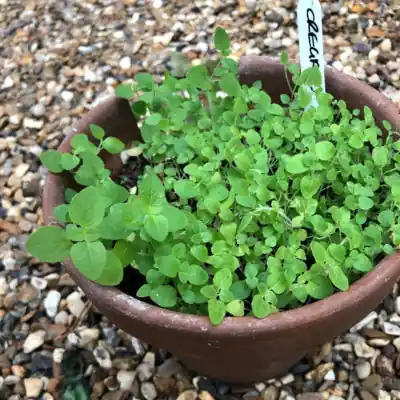
Once established, both oregano and sage need to be watered only once per week, as they prefer moist but not soggy soil conditions. I prefer watering a garden with sage and oregano once the top inch of the soil starts to dry up.
Other good pairs I recommend include chives, lavender, parsley, basil, and radish.
Plants NOT to Pair with Sage
Not all plants pair well with sage, as some will hinder the growth of sage, or vice versa. To avoid making this gardening mistake, you should know what plants to avoid inter-planting with sage.
Plants that should not be paired with sage include cucumber, fennel, wormwood, rue, onions, basil, and shallots.
- Cucumbers have high potassium and phosphorus requirements. However, when grown close to sage, the latter plant outcompetes cucumbers for these essential nutrients. The resultant effect is stunted growth in the cucumbers. The cucumbers will also have a poorer flavor.
- Fennel is one of the worst-performing plants when it comes to polyculture. It doesn’t pair well with most garden vegetables and herbs, including sage. Inter-planting the two will cause stunted growth in sage.
- Onions and shallots have higher moisture requirements than sage, and sticking to the water requirements of one of the companion plants results in the other being either underwatered or overwatered. Remember, the leaves of overwatered sage become droopy and wilt, and the plant eventually dies.
- Rue. Despite rue being an effective deterrent to aphids, a common sage pest, you shouldn’t pair it with sage. Rue competes for resources with sage, stunting the growth of the sage plants.
More Companion Planting Guides:
Conclusion
If you’re growing sage, some good garden companions include carrots, thyme, brassicas, pole beans, oregano, and strawberries. Bad pairs include cucumber, fennel, wormwood, rue, onions, basil, and shallots.If you have questions about starting your vegetable garden, reach out to alex@gardenine.com.


